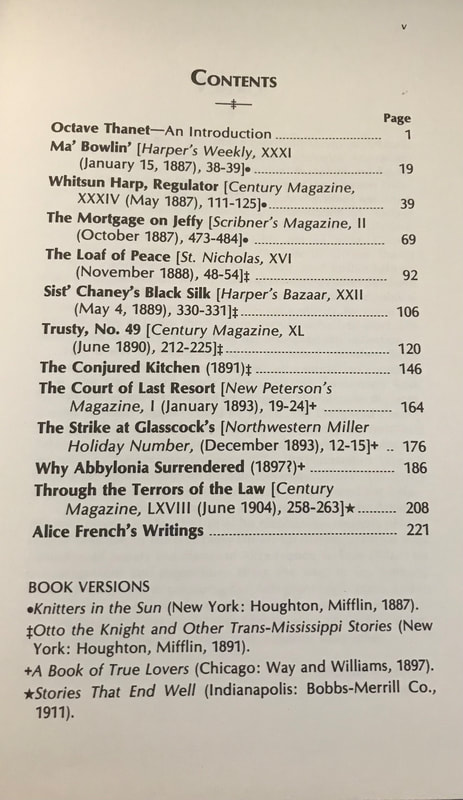|
I was excited to begin Otto the Knight and Other Trans Mississippi Stories in part because of the regional focus. A few of these stories carry over characters from stories published in Knitters in the Sun. Michael B. and Carol W. Dougan's 1980 collection By the Cypress Swamp: The Arkansas Stories of Octave Thanet brings many of those stories together, although the title story "Otto the Knight" is not in that collection. Given the very light emphasis on the setting here, the omission of the story isn't completely surprising. McMichael also only mentions the story itself on page 125, indicating that it was chosen as the title for the collection solely based on the fact it was the first story. The omission is interesting, given that Lum Shinault definitely lives on the Black River in "Whitsun Harp, Regulator" and because there is the connection to getting lost in the swamp. Marty Ann searching for Boo gets lost, just as Ma' Bowlin got lost in the earlier story. Basic Summary:
0 Comments
Basic Plot:
This story covers an interesting relationship between and a strange Countess an old childhood friend who has recently been widowed. The countess has taken a job to help support the window and the focus of the story is on the Bailey family. The husband and the Bailey family is a communist head because of his principles has been out of work. His wife comes to the two women and asks for assistance. Bailey refuses to give up his affiliations with the union and the Countess refuses to hire him on without the promise that he will not unionize and strike. Within this story the countess makes two offers to employ Bailey, and she’s turned down both times. The Bailey family moves to Chicago where the countess later has to journey in order to settle the conditions of her husband’s will when he dies. She arrives on the day of The Railroad Strike of 1877 in Chicago and sees Mrs. Bailey shortly before she is trampled and shot during the riots. Coincidentally, she winds up in the same room with Mr. Bailey as they bring in the body of his dead wife. Bailey accuses the countess of murdering his wife, and she denies the accusation, reminding him that she offered him a job twice. The story ends with neither agreeing. This story is yet another example within this collection of Thanet bringing together opposing social and economic status people into a stalemate. The story is remarkable mainly for this, but also for the depiction of the relationship between the countess and her living companion. |
About this project:I've been saying since 2004 that I was going to write a critical biography of Octave Thanet (Alice French). This blog is the start of that work and will include notes, links to research, and other OT related tidbits. Archives
February 2023
Categories
All
|


 RSS Feed
RSS Feed